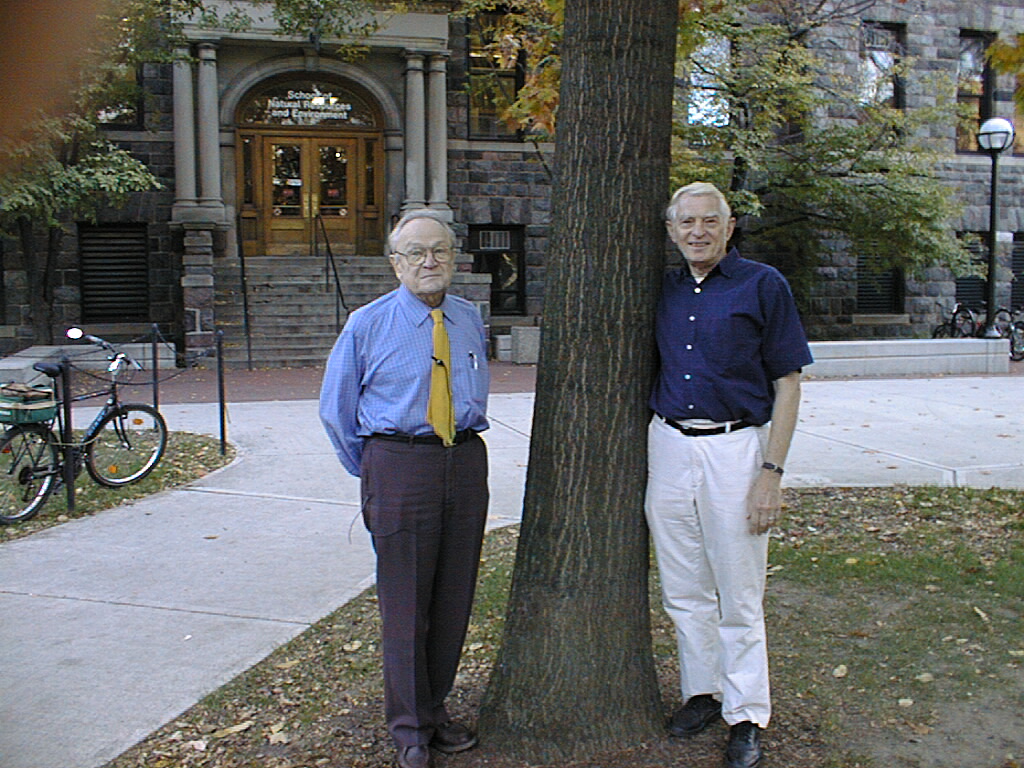The History and Development of a Team-Taught Course.

In the 1960s, the School of Natural Resources (a revolutionary name dating from 1952!) had a departmental structure with Departments of Forestry, Fisheries, Wildlife, and Conservation. Everyone was nicely partitioned into their own disciplines. In Forestry, one of the first professional courses was Dendrology (SNR 211), a sophomore-level course. Dendrology was a required course of all Forestry majors and enrolled 40-50 students each fall. Dendrology is the study of trees. And the lectures emphasized the trees and their characteristics, range, commercial and non-commercial uses, and natural history traits. In Lecture, the tree species were considered one by one, starting with Acer and proceeding on through the semester to Ulmus. Field labs (3 hrs) were mostly conducted in the University properties of Saginaw Forest, Stinchfield Woods, Nichols Arboretum, and main campus.
The Professor teaching Dendrology in the 1960s was Grant Sharpe, whose field
of interest was Forest Recreation. He was a pioneer in this field and really
wanted to develop these interests more fully for his graduate program and
not devote time to teach Dendrology. Therefore, I (Burt) was presented with
the opportunity to teach the Dendrology course. I had been hired in fall 1964
to teach Forest Ecology, Silviculture, Forest Biology (at Camp Filibert Roth,
Iron River, MI) and other courses (Advanced Forest Ecology, Forest Genetics).
Despite this teaching load, I engaged Herb Wagner right away to see if he
was interested in developing a new, University-wide course which we would
team-teach. Herb had been one of my major advisors on my Doctoral program,
and was willing and eager to develop this course since he had taught for many
years a fall woody plants course and the spring half-semester course of Field
Botany (herbaceous plants). Instead of studying only trees, we proposed to
study all woody plants--trees, shrubs, and vines. And we proposed to teach
their biology and ecology, as well as their identification. Our two main objectives
were to teach the "whole plant" (not just emphasizing the leaves)
and to teach the plants where they actually occurred in nature in the diverse
landscapes surrounding Ann Arbor. In those days, this was a pretty revolutionary
idea and, not surprisingly, met with some resistance.
As is the case for all new courses, they must be first approved by the unit,
The Forestry Department, and then the faculty of the School. Our proposal
had excellent support in the Forestry Department of 15 faculty members. However,
the Chairman of the Forestry Department, Ken Davis, a nationally recognized
authority on Forest Management was not about to accept this new fangled name--Woody
Plants: Biology and Identification. He talked to me personally and recommended
to the Forestry faculty members that the course be called: "Woody Plants
of the Forest!" Well, I said NO Problem--knowing that the computer (just
now becoming used in registration) would only recognize 12 characters, therefore
...WOODY PLANTS! So there you have it!
In the first fall term of Woody Plants, Herb and I and graduate student Terry
Sharik, worked hard to establish the 14 field labs of the course. In those
days, labs were 4 hrs long (1-5) and we taught 210 plants instead of the 180
we teach today. My weekly afternoon schedule in the fall of 1965 was prepping
Woody Plants on Sunday, teaching Forest Ecology on Monday and Tuesday, prepping
Forest Ecology for the next week on Wednesday, and teaching Woody Plants with
Terry Sharik on Thursday and Friday. I had Saturday off!
The first class of Woody Plants in the fall of 1965 enrolled 45 students,
including 2 women. One of the women, Jean MacGregor, went on to distinguish
herself as one of the nation's leading authorities on undergraduate education
and specializing in learning communities. Terry Sharik was the only "TA"
in the course for the first four years, and I helped Terry with the field
labs since we had 20 to 25 students per section. Woody Plants increased in
size to 180 students in 1970 and then to the maximum of 240 in 1974 at the
height of Earth Day concerns. There was so much interest in the "environment"
and the way we taught Woody Plants that for three years, 1974-1976, we enrolled
60-70 student in the Spring Woody Plants course--in addition to our >200
student enrollments in the fall. The low point for the course came in 1985
when, after SNR was reviewed for discontinuance by the University Central
Administration, the enrollment dropped to 45. However, SNR survived to become
SNRE, and Woody Plants continues on into the 21st Century.
Herb Wagner was an amazing person, dedicated to teaching, and a prime motivator
for students in the course. We made a good team--the Master Teacher and his
student! Herb continued to teach Woody Plants with me for, amazingly, for10
years after he retired out of love for the course and the students. He taught
Woody Plants every year for 35 years--never once taking a sabbatical leave.
What an amazing record! He gave his last lecture to close out the class in
December1999 just a few weeks before he died in January, 2000. He was unsurpassed
in teaching for any audience and an inspiration and unforgettable experience
for Woody Plants students--about 4000 of them--over the years. His legacy
is continued in the teaching of Melanie Gunn, who worked closely with Herb
to develop "his" spring course--now called Spring Ecosystems and
Plants. She brings all of us Herbs' great enthusiasm and interest in plants
of all kinds, shapes, and sizes!
